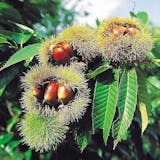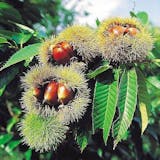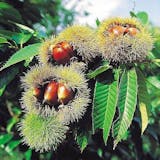


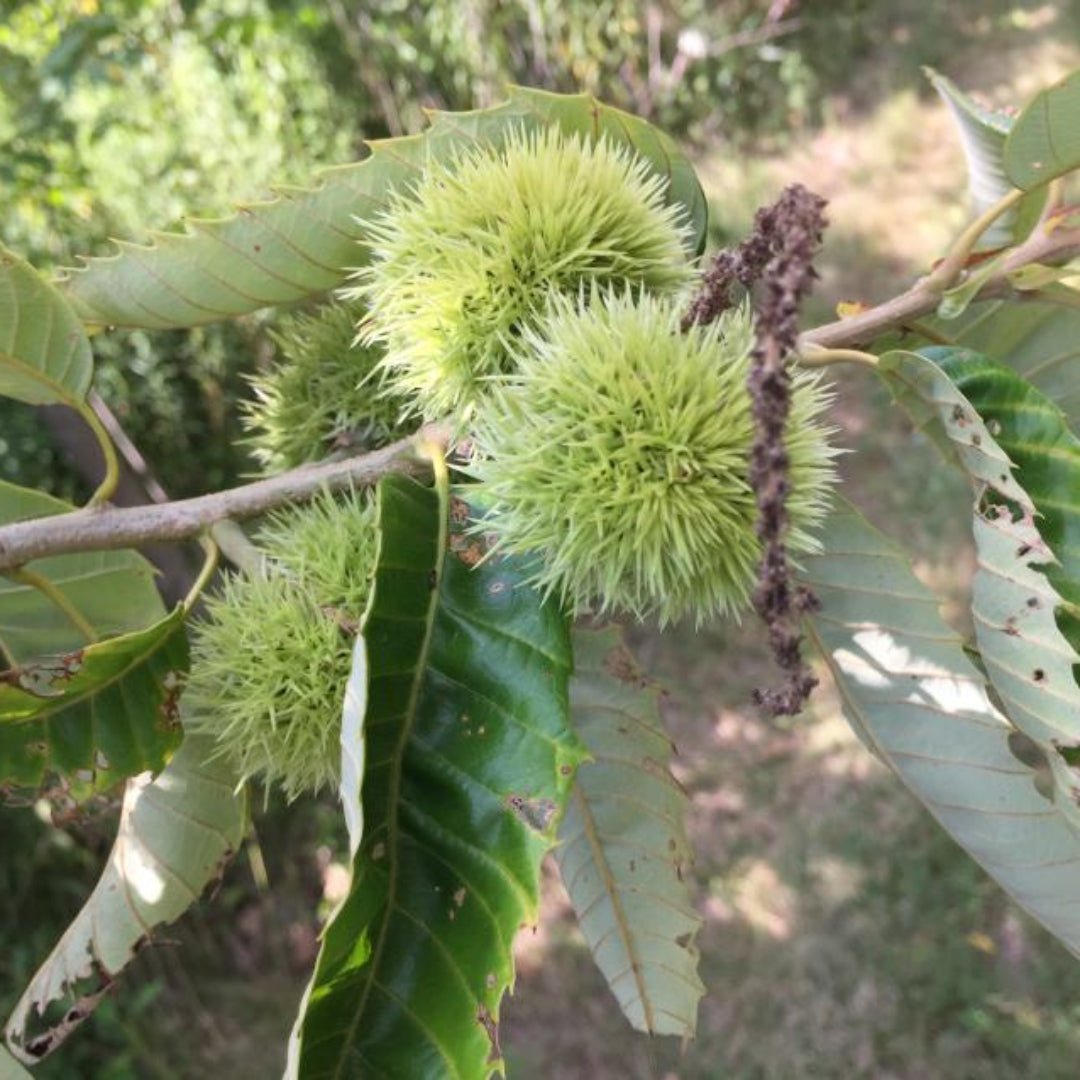

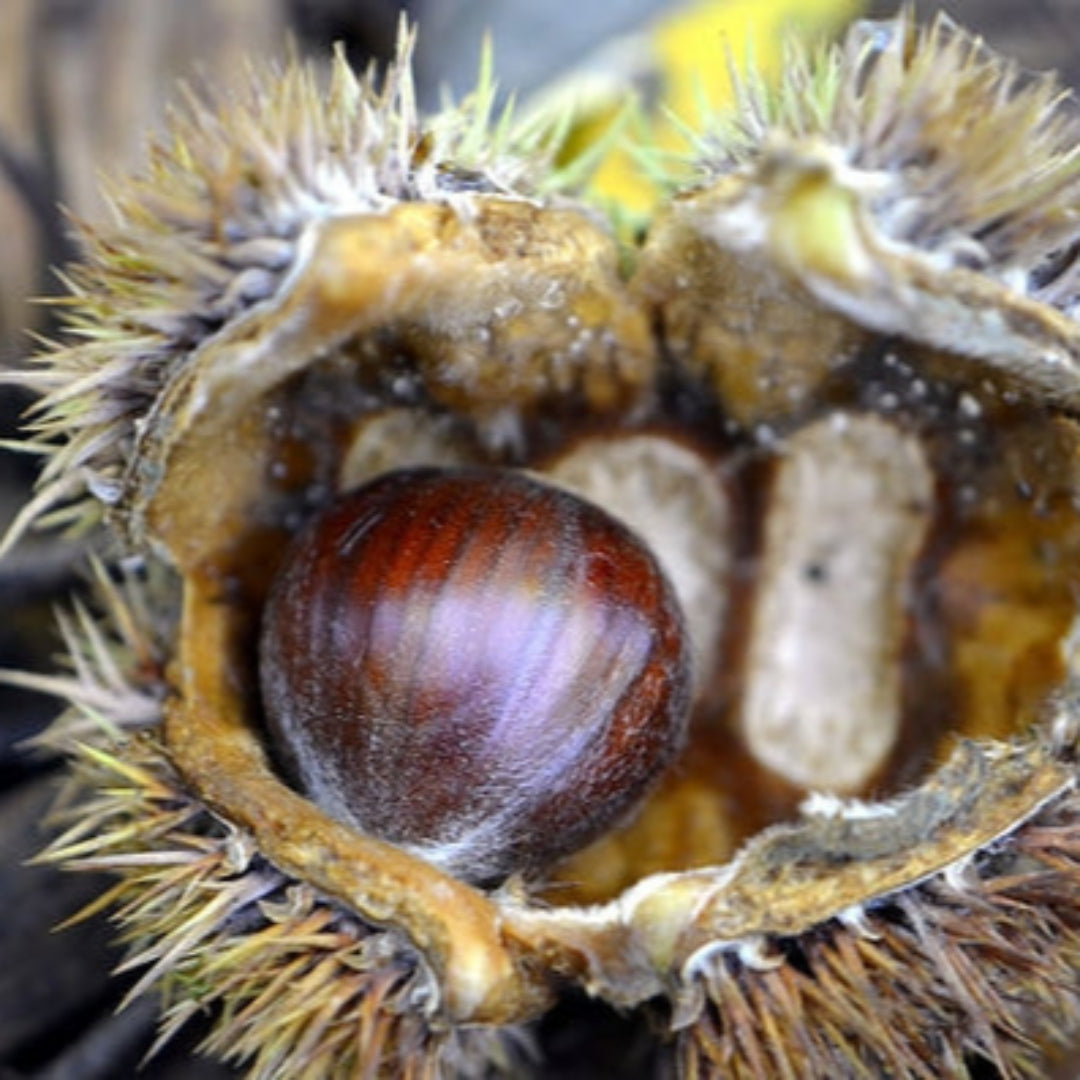
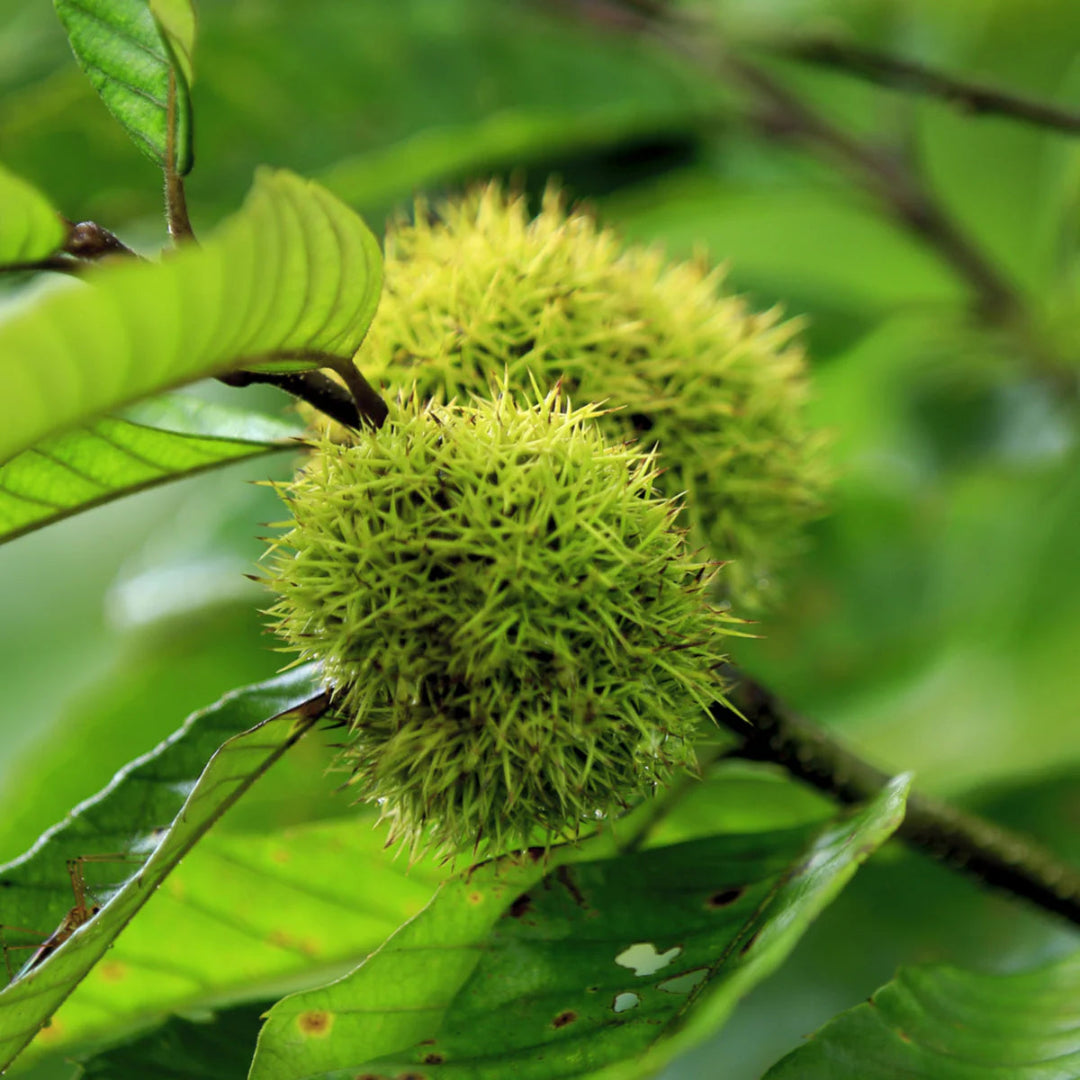

Product Details
Description
Chinese Chestnut Tree
Castanea mollissima, the Chinese Chestnut, is a hardy nut tree prized for its delicious, sweet chestnuts and strong adaptability. Unlike the American chestnut, it is highly resistant to chestnut blight, making it a reliable choice for orchards and landscapes.
In early summer, fragrant white-yellow catkins cover the tree, followed by spiny burrs that ripen in fall, releasing large, sweet, edible chestnuts. A beautiful shade tree as well as a nut producer, the Chinese Chestnut is both ornamental and productive.
- � Produces sweet, edible chestnuts in fall
- � Also serves as an attractive shade tree
- �️ Resistant to chestnut blight
- � Thrives in full sun with well-drained soil
- � Mature Size: 40–60 ft. tall, 40 ft. wide
- � Great for roasting, baking, and fresh eating
Note: Chinese Chestnuts are not self-pollinating—you’ll need at least two trees for a good nut harvest.
Growing Zones: 4–8 outdoors

| Mature Height: | 40–60 ft. |
| Sunlight: | Full Sun |
| Mature Width: | Up to 40 ft. |
| Botanical Name: | Castanea mollissima |
| Growth Rate: | Moderate |
| Bloom Time: | Early Summer |
| Type: | Deciduous Nut Tree |
FAQ's
Do Chinese Chestnut trees produce edible nuts?
Yes, they produce sweet, delicious nuts in fall that are excellent roasted, baked, or eaten fresh.
Do I need more than one tree for pollination?
Yes, at least two trees are required for good nut production since they are not self-pollinating.
When will the tree start producing nuts?
Chinese Chestnuts typically begin producing nuts within 5–7 years after planting.
How big do Chinese Chestnut trees get?
They can grow 40–60 ft. tall with a wide, rounded canopy up to 40 ft. across.
Are they disease-resistant?
Yes, Chinese Chestnuts are resistant to chestnut blight, making them a hardy and reliable option.
Customer Service
Pixies Gardens
2024 Mcdaniel Mill Road Conyers GA 30094
Email: cs@pixiesgardens.com












